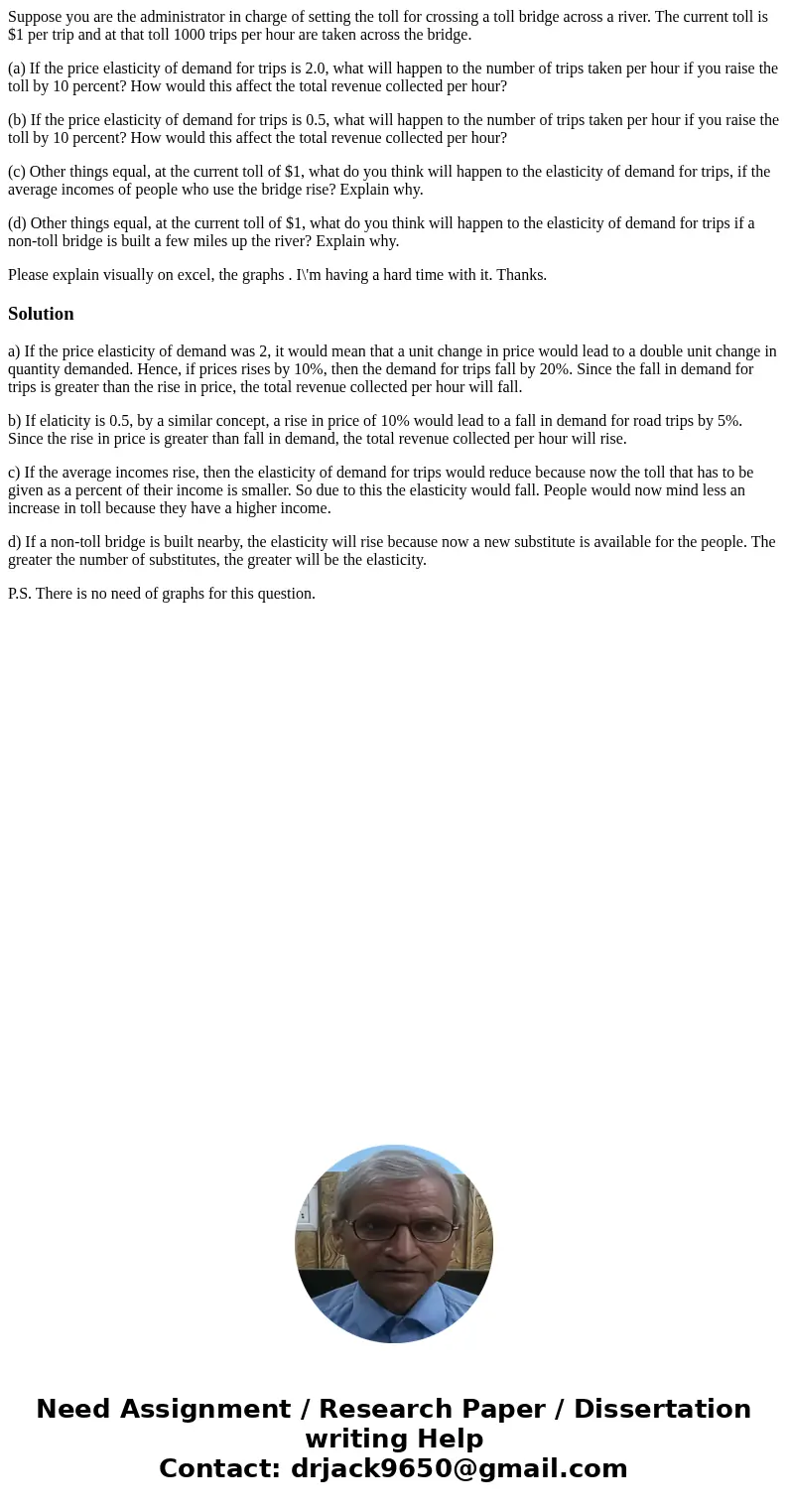Suppose you are the administrator in charge of setting the t
Suppose you are the administrator in charge of setting the toll for crossing a toll bridge across a river. The current toll is $1 per trip and at that toll 1000 trips per hour are taken across the bridge.
(a) If the price elasticity of demand for trips is 2.0, what will happen to the number of trips taken per hour if you raise the toll by 10 percent? How would this affect the total revenue collected per hour?
(b) If the price elasticity of demand for trips is 0.5, what will happen to the number of trips taken per hour if you raise the toll by 10 percent? How would this affect the total revenue collected per hour?
(c) Other things equal, at the current toll of $1, what do you think will happen to the elasticity of demand for trips, if the average incomes of people who use the bridge rise? Explain why.
(d) Other things equal, at the current toll of $1, what do you think will happen to the elasticity of demand for trips if a non-toll bridge is built a few miles up the river? Explain why.
Please explain visually on excel, the graphs . I\'m having a hard time with it. Thanks.
Solution
a) If the price elasticity of demand was 2, it would mean that a unit change in price would lead to a double unit change in quantity demanded. Hence, if prices rises by 10%, then the demand for trips fall by 20%. Since the fall in demand for trips is greater than the rise in price, the total revenue collected per hour will fall.
b) If elaticity is 0.5, by a similar concept, a rise in price of 10% would lead to a fall in demand for road trips by 5%. Since the rise in price is greater than fall in demand, the total revenue collected per hour will rise.
c) If the average incomes rise, then the elasticity of demand for trips would reduce because now the toll that has to be given as a percent of their income is smaller. So due to this the elasticity would fall. People would now mind less an increase in toll because they have a higher income.
d) If a non-toll bridge is built nearby, the elasticity will rise because now a new substitute is available for the people. The greater the number of substitutes, the greater will be the elasticity.
P.S. There is no need of graphs for this question.

 Homework Sourse
Homework Sourse